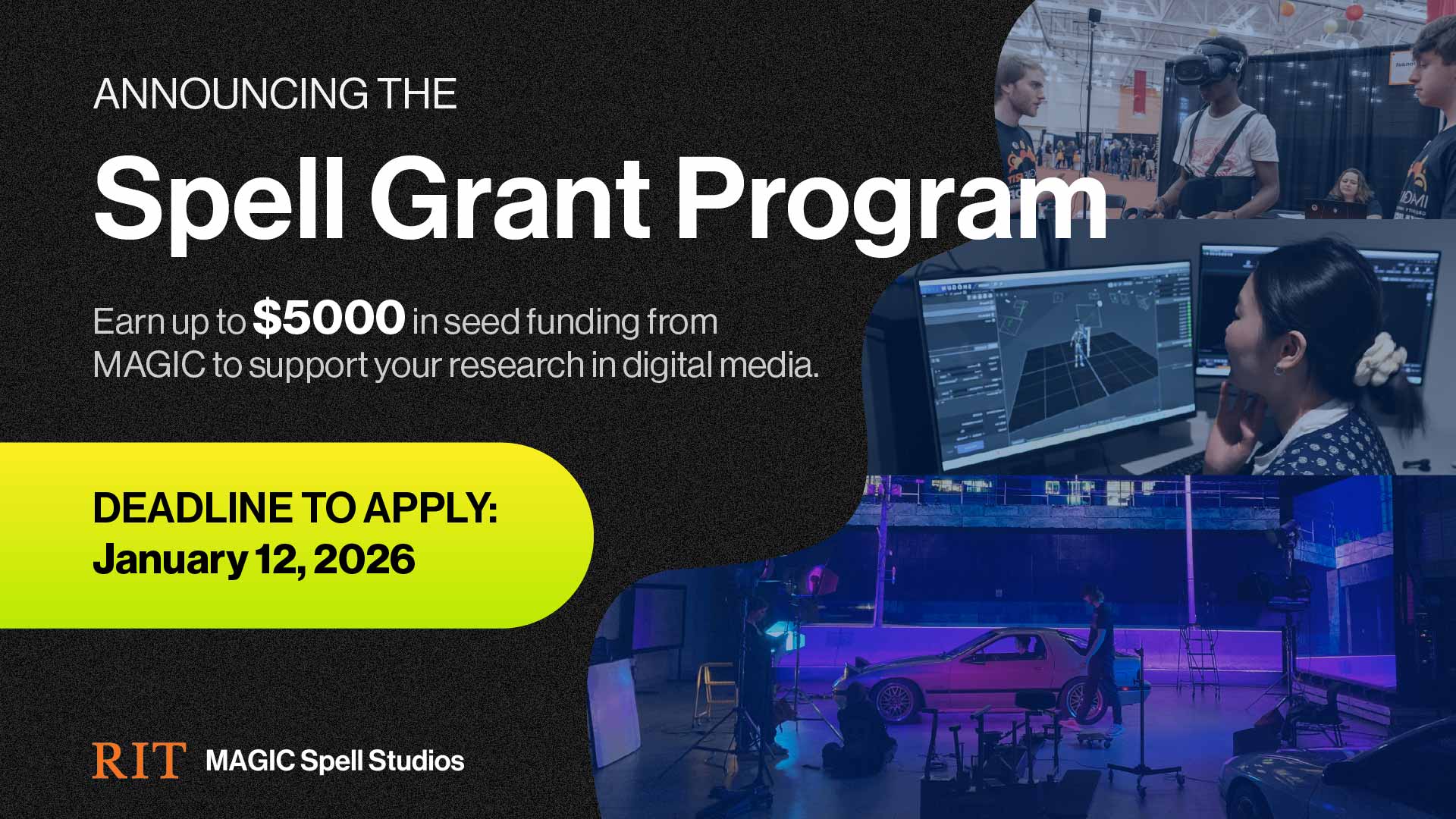Research
The Spell Grant

MAGIC Spell Studios is pleased to announce the Spell research seed grant program for faculty and staff at RIT. At MAGIC, we learn by making things! The Spell Grant program serves to provide researchers at RIT with seed funding up to $5000 to aid their pursuit of external grant awards in their field. Funds are provided to assist faculty and staff researchers investigating any direct application of digital media in art, games, interactivity and creativity. Eligible submissions may include focus on art or technology, entertainment or serious distribution, humanities or engineering, storytelling or discovery, with an outcome focused on successful submission of one or more proposals for continued extramural funding. View more details about the Spell grant.
Deadline: January 12, 2026
Learn more about previous Spell grant awards here
Students and faculty embrace our motto “we learn by making things,” by contributing to projects above and beyond their classroom requirements. Whether for research and independent exploration or in hopes of starting up their own studios and businesses, project teams publish films, games, interactive experiences and more for public distribution through MAGIC.
Affiliated Research
The MAGIC center is home to several multidisciplinary research labs at RIT that welcome faculty and students from all academic disciplines. Each lab represents a specialized focus area in media. Contributors are engaged in curriculum, exploratory research, and applied design at the intersection of technology and the arts.

Frameless Labs

Virtual Production
